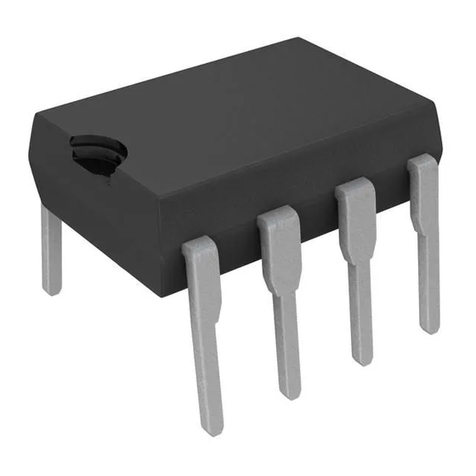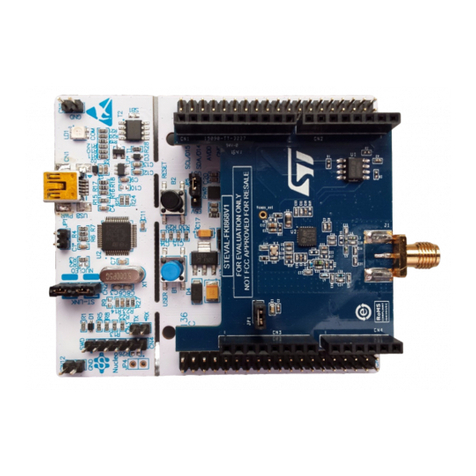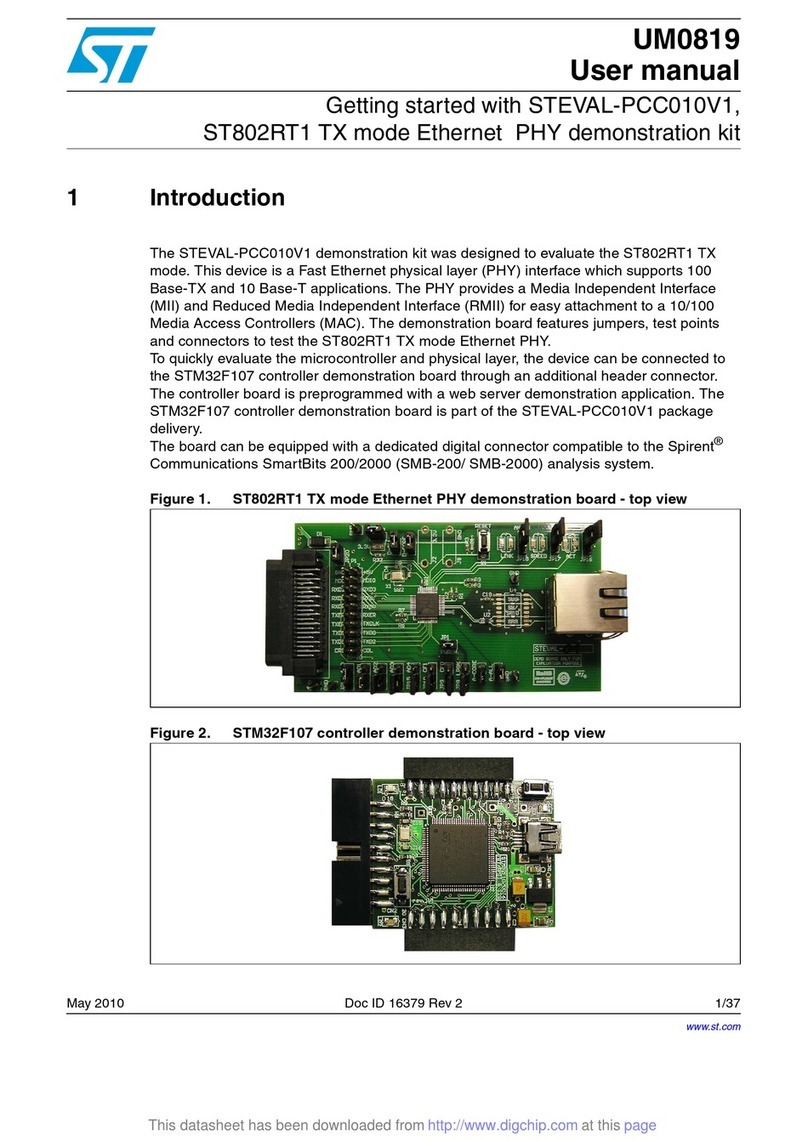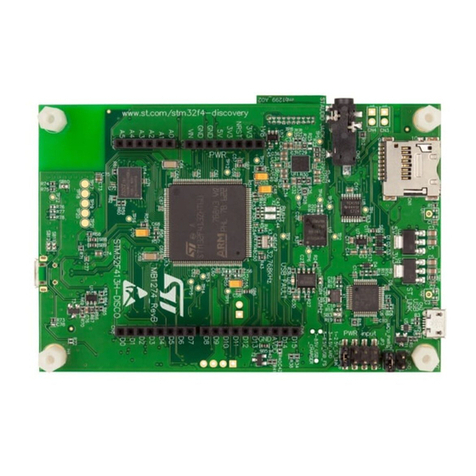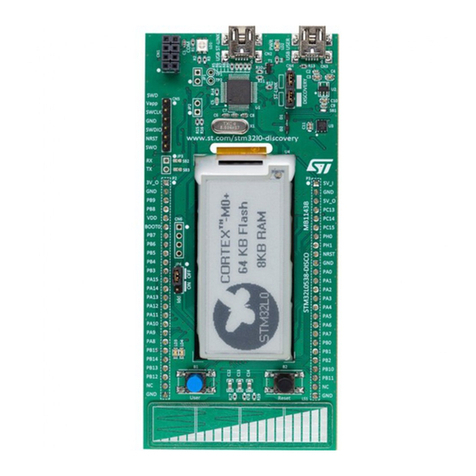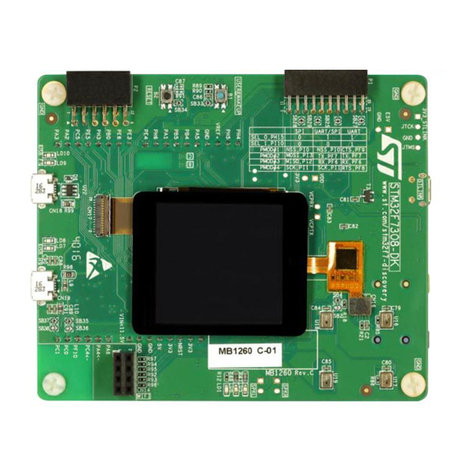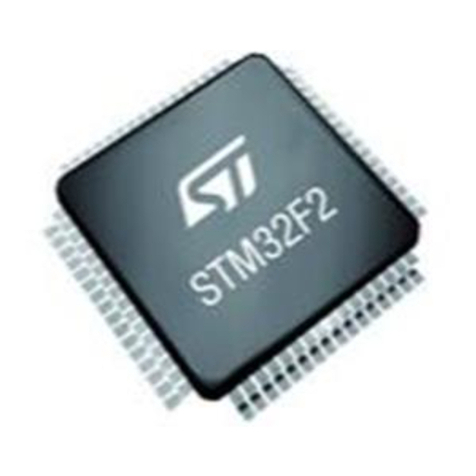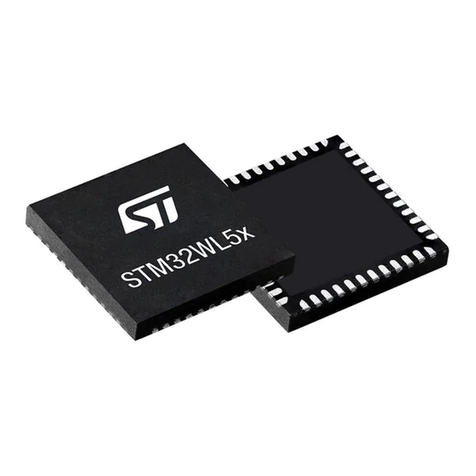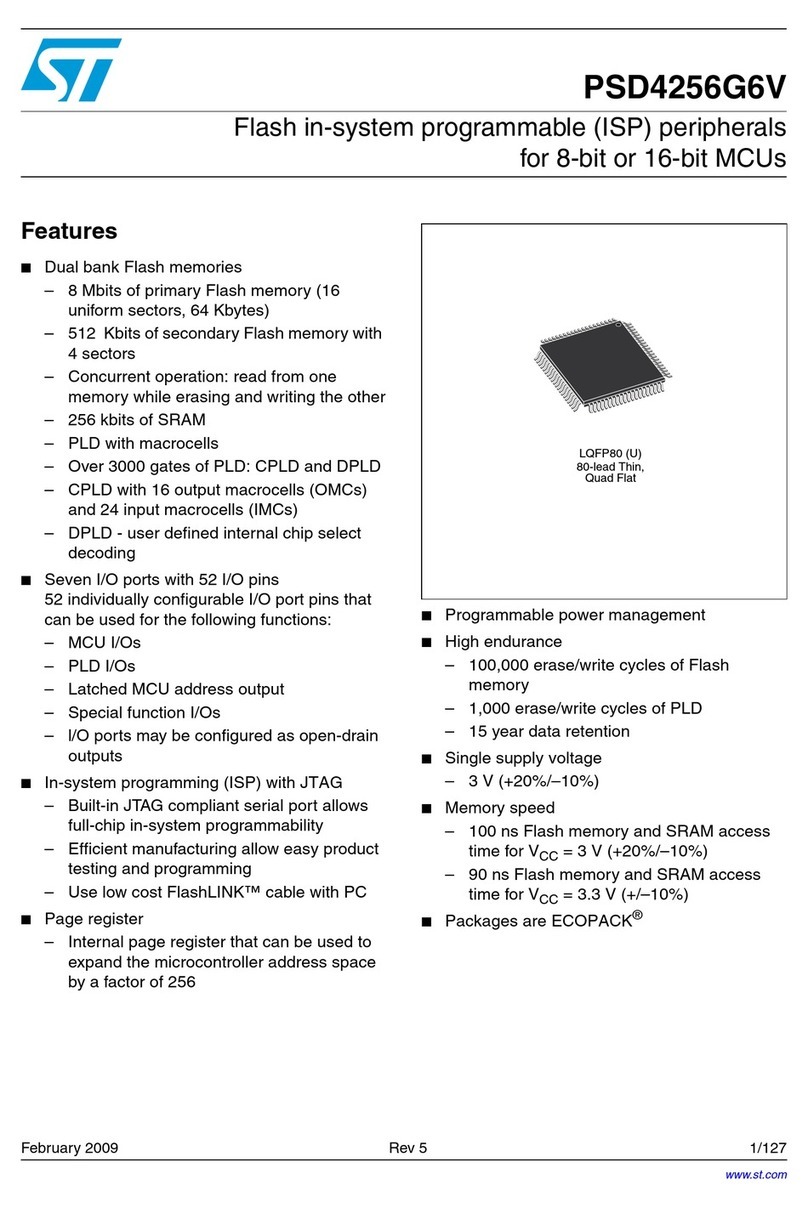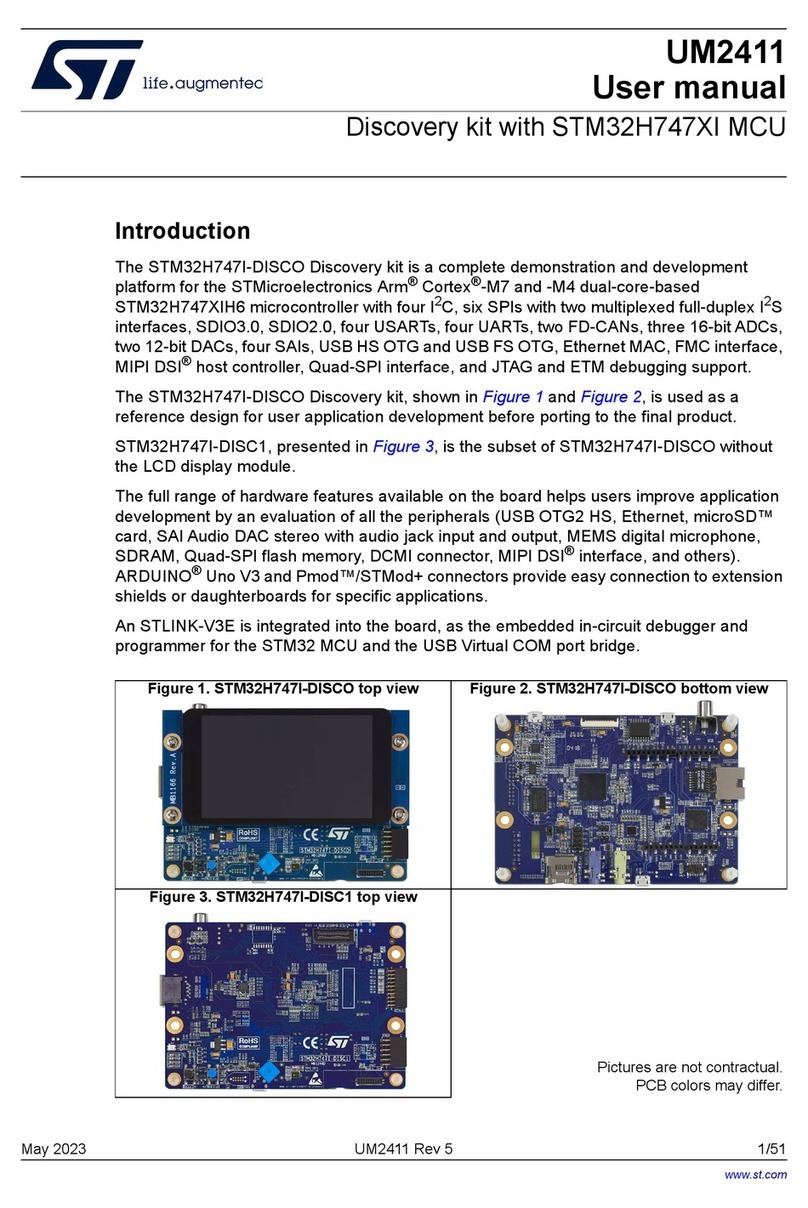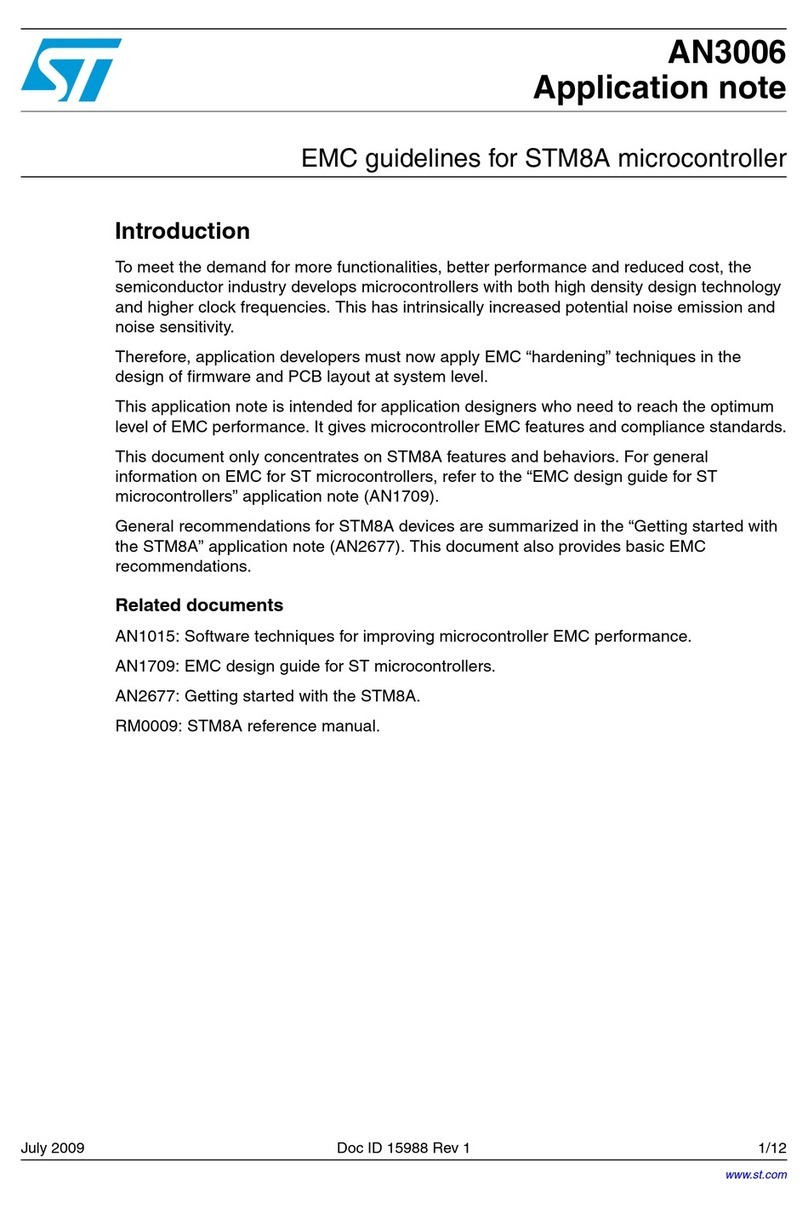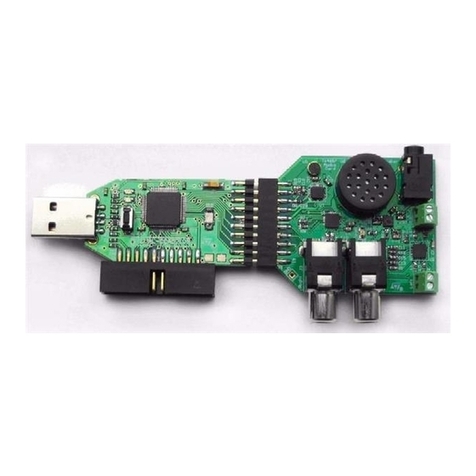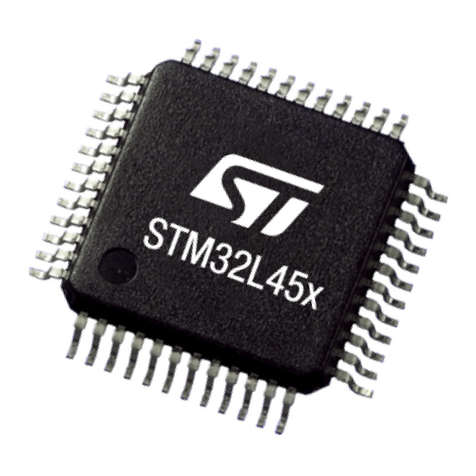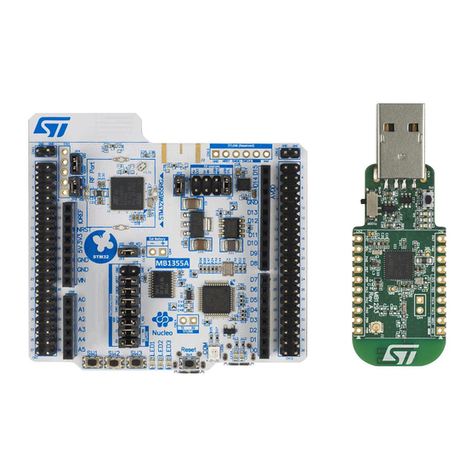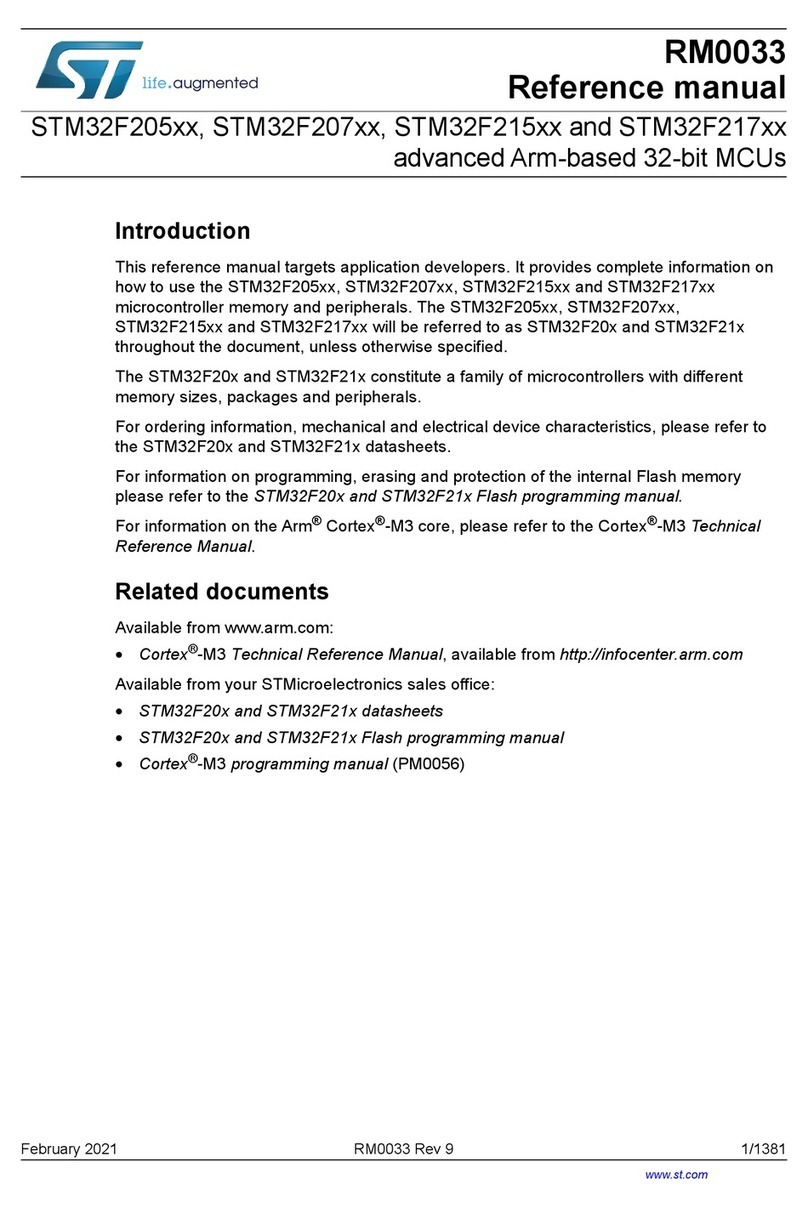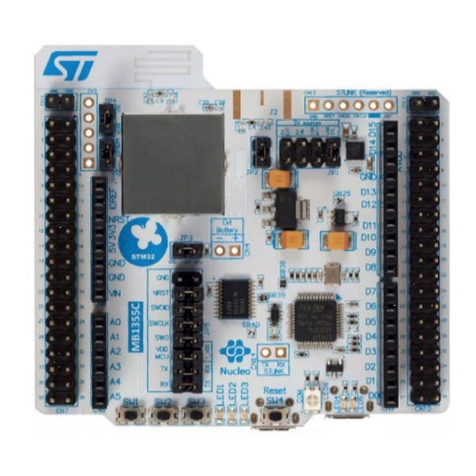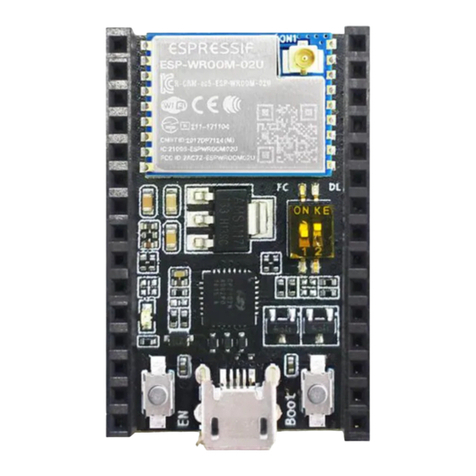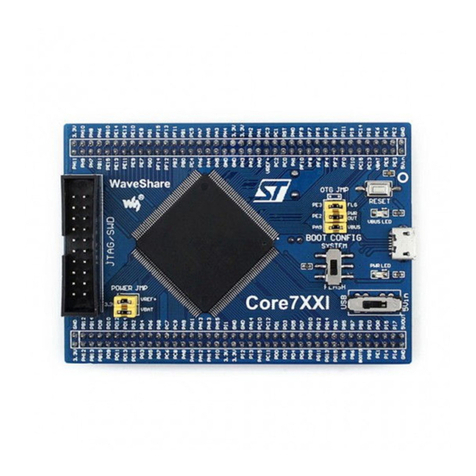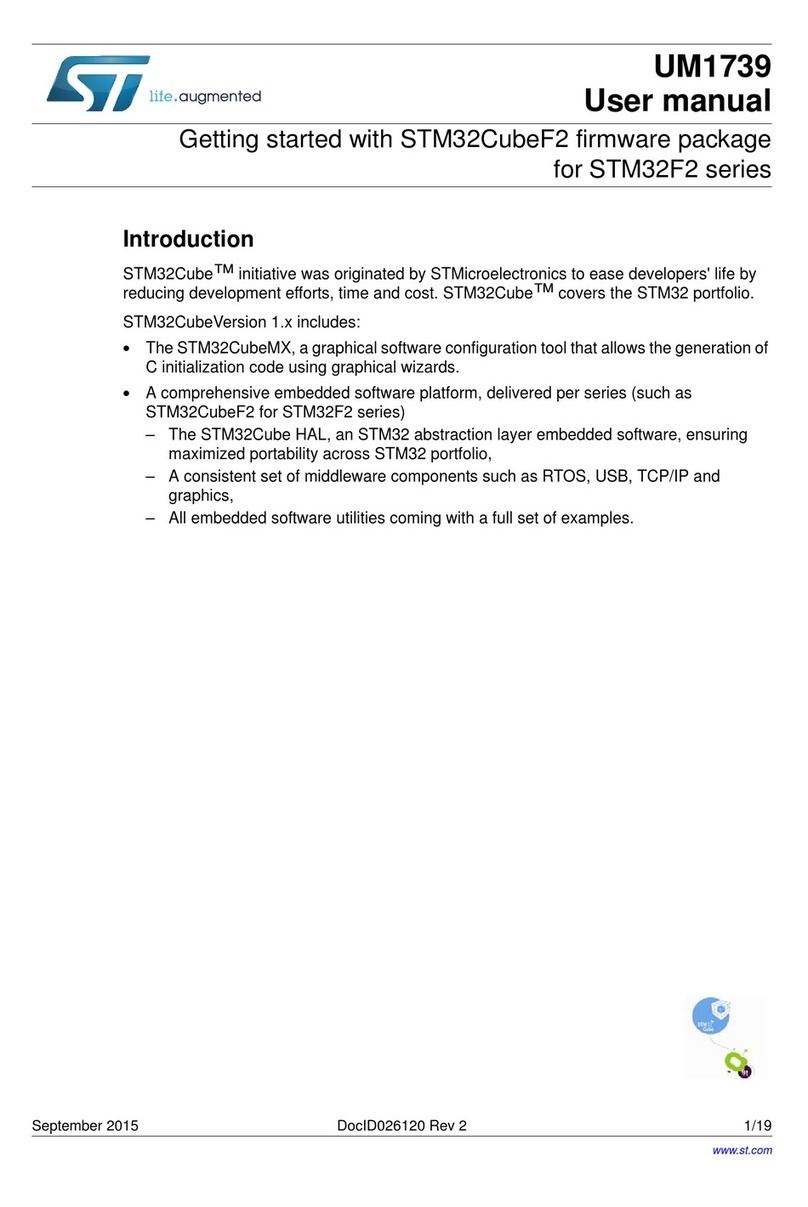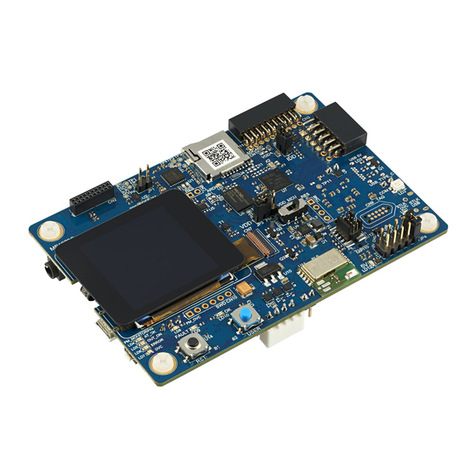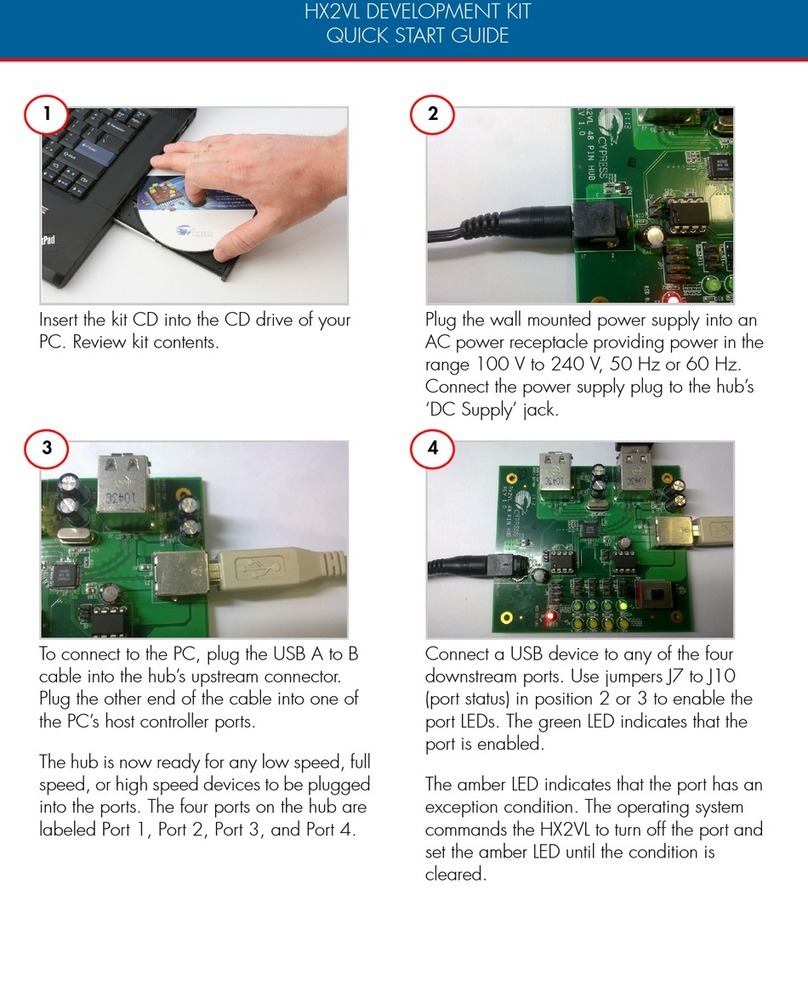
Contents AN4080
2/29 Doc ID 023035 Rev 2
Contents
1 Power supplies of the STM32F05xxx family . . . . . . . . . . . . . . . . . . . . . . 4
1.1 Power supply schemes . . . . . . . . . . . . . . . . . . . . . . . . . . . . . . . . . . . . . . . . 4
1.1.1 Independent analog converter supply . . . . . . . . . . . . . . . . . . . . . . . . . . . 5
1.1.2 Battery backup . . . . . . . . . . . . . . . . . . . . . . . . . . . . . . . . . . . . . . . . . . . . . 5
1.1.3 Voltage regulator . . . . . . . . . . . . . . . . . . . . . . . . . . . . . . . . . . . . . . . . . . . 5
1.2 Reset and power supply supervisor . . . . . . . . . . . . . . . . . . . . . . . . . . . . . . 7
1.2.1 Power-on reset (POR) / power-down reset (PDR) . . . . . . . . . . . . . . . . . . 7
1.2.2 System reset . . . . . . . . . . . . . . . . . . . . . . . . . . . . . . . . . . . . . . . . . . . . . . 8
1.2.3 Programmable voltage detector (PVD) . . . . . . . . . . . . . . . . . . . . . . . . . 10
2 Power supplies of the STM32F06xxx family . . . . . . . . . . . . . . . . . . . . . 11
2.1 Power supply schemes . . . . . . . . . . . . . . . . . . . . . . . . . . . . . . . . . . . . . . . 11
2.1.1 Independent analog converter supply . . . . . . . . . . . . . . . . . . . . . . . . . . 12
2.1.2 Battery backup . . . . . . . . . . . . . . . . . . . . . . . . . . . . . . . . . . . . . . . . . . . . 12
2.2 Reset and power supply supervisor . . . . . . . . . . . . . . . . . . . . . . . . . . . . . 13
2.2.1 External power-on reset and power-down reset (NPOR) . . . . . . . . . . . 13
2.2.2 System reset . . . . . . . . . . . . . . . . . . . . . . . . . . . . . . . . . . . . . . . . . . . . . 13
3 Clocks . . . . . . . . . . . . . . . . . . . . . . . . . . . . . . . . . . . . . . . . . . . . . . . . . . . . 15
3.1 High speed external clock signal (HSE) OSC clock . . . . . . . . . . . . . . . . . 15
3.2 LSE clock . . . . . . . . . . . . . . . . . . . . . . . . . . . . . . . . . . . . . . . . . . . . . . . . . 16
3.3 HSI clock . . . . . . . . . . . . . . . . . . . . . . . . . . . . . . . . . . . . . . . . . . . . . . . . . 16
3.4 LSI clock . . . . . . . . . . . . . . . . . . . . . . . . . . . . . . . . . . . . . . . . . . . . . . . . . . 17
3.5 ADC clock . . . . . . . . . . . . . . . . . . . . . . . . . . . . . . . . . . . . . . . . . . . . . . . . . 17
3.6 Clock security system (CSS) . . . . . . . . . . . . . . . . . . . . . . . . . . . . . . . . . . 17
4 Boot configuration . . . . . . . . . . . . . . . . . . . . . . . . . . . . . . . . . . . . . . . . . 18
5 Debug management . . . . . . . . . . . . . . . . . . . . . . . . . . . . . . . . . . . . . . . . 19
5.1 Introduction . . . . . . . . . . . . . . . . . . . . . . . . . . . . . . . . . . . . . . . . . . . . . . . 19
5.2 SWD port (serial wire debug) . . . . . . . . . . . . . . . . . . . . . . . . . . . . . . . . . . 19
5.3 Pinout and debug port pins . . . . . . . . . . . . . . . . . . . . . . . . . . . . . . . . . . . 19
5.3.1 Serial wire debug (SWD) pin assignment . . . . . . . . . . . . . . . . . . . . . . . 19
